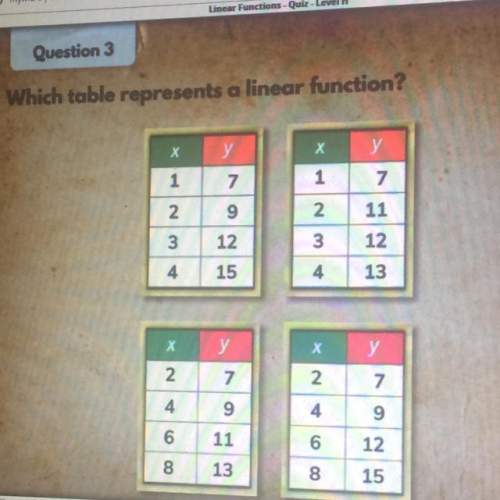
Mathematics, 04.03.2021 22:10 josie311251
A diagnostic test for a disease is such that it (correctly) detects the disease in 90% of the individuals who actually have the disease. Also, if a person does not have the disease, the test will report that he or she does not have it with probability 0.9. Only 1% of the population has the disease in question. If a person is chosen at random from the population and the diagnostic test indicates that she has the disease, what is the conditional probability that she does, in fact, have the disease

Answers: 3


Another question on Mathematics

Mathematics, 21.06.2019 19:30
Vinay constructed this spinner based on the population of teachers at his school according to vinays model what is the probability that he will have a male history teacher two years in a row
Answers: 3

Mathematics, 21.06.2019 20:20
Which of the following best describes the delian problem?
Answers: 3

Mathematics, 21.06.2019 21:30
Two rectangular prisms have the same volume. the area of the base of the blue prism is 418 4 1 8 square units. the area of the base of the red prism is one-half that of the blue prism. which statement is true?
Answers: 3

Mathematics, 21.06.2019 22:30
Whit h equation best represents this situation the number 98 increased by an unknown number equal to 120
Answers: 1
You know the right answer?
A diagnostic test for a disease is such that it (correctly) detects the disease in 90% of the indivi...
Questions

History, 04.09.2021 01:20

Biology, 04.09.2021 01:20

Mathematics, 04.09.2021 01:20


English, 04.09.2021 01:20




Mathematics, 04.09.2021 01:20


Mathematics, 04.09.2021 01:20


English, 04.09.2021 01:20

Biology, 04.09.2021 01:20

English, 04.09.2021 01:20

Mathematics, 04.09.2021 01:20


History, 04.09.2021 01:20

Mathematics, 04.09.2021 01:20

Mathematics, 04.09.2021 01:20


 is the probability of both A and B happening.
is the probability of both A and B happening.





